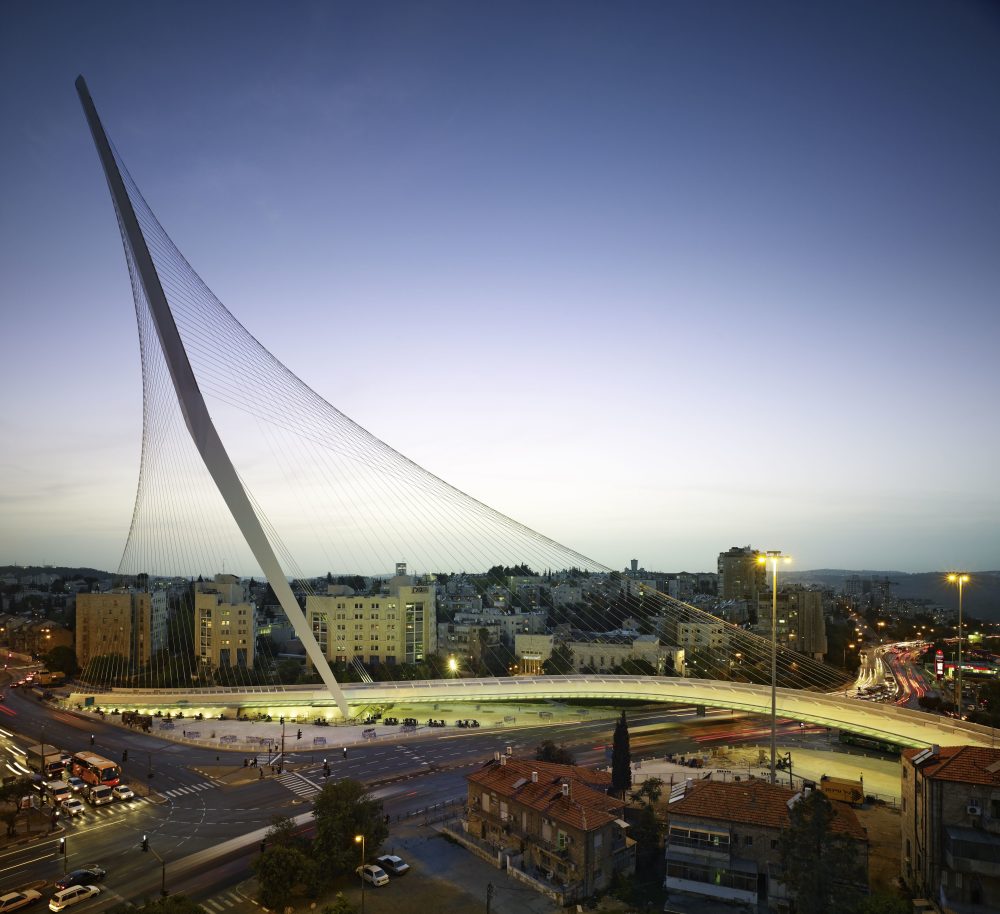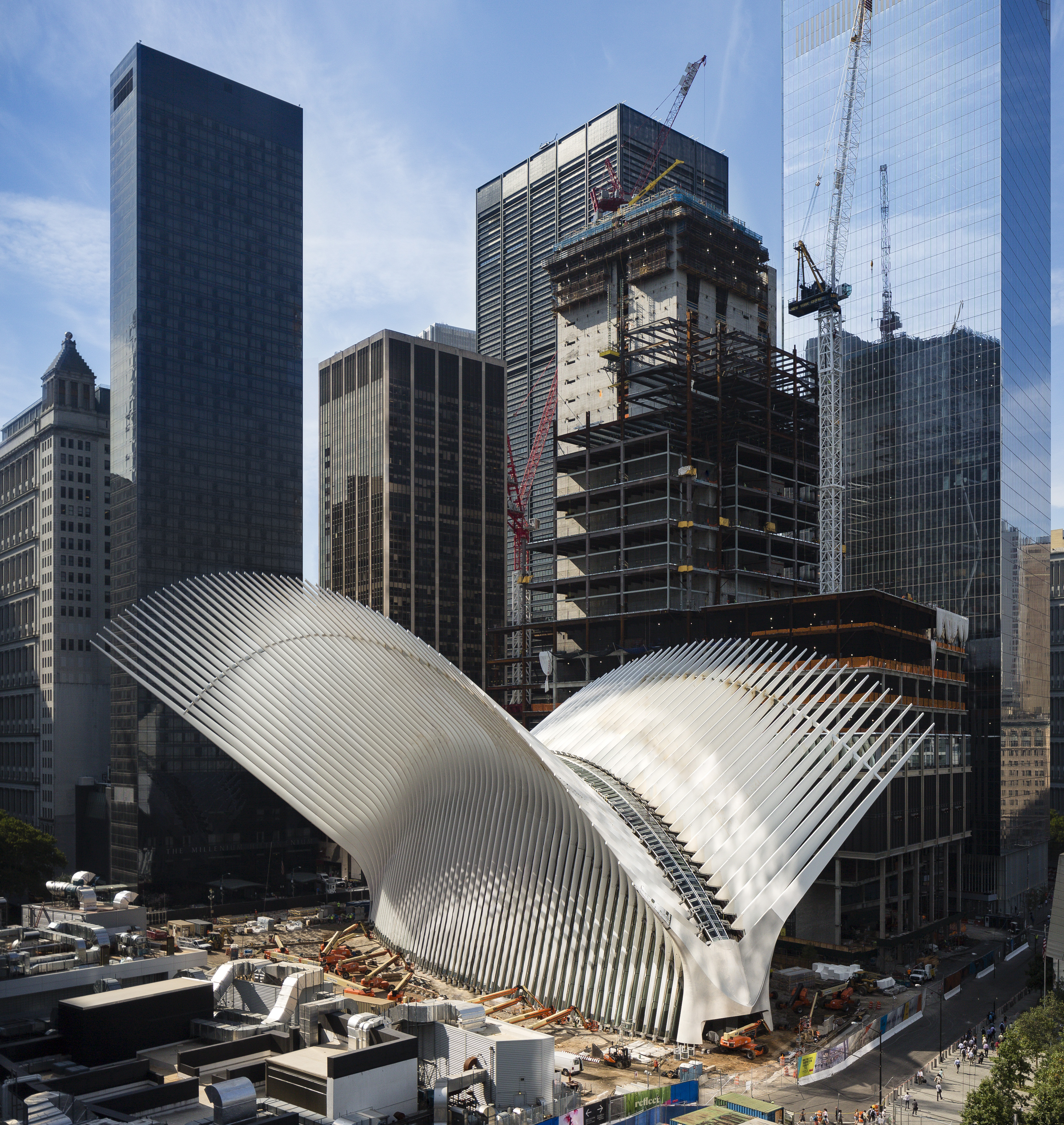
Taking to the stage on the 10th floor of 7 World Trade Center in New York City last week, Spanish architect Santiago Calatrava received the 2015 European Prize for Architecture. Awarded by the European Centre for Architecture Art Design and Urban Studies and the Chicago Athenaeum architecture museum, the prize recognizes innovative designers across the continent for their contributions to the architectural heritage and history of Europe.
Past winners include Dane Bjarke Ingels of BIG, Norwegian firm TYIN Tegnestue, and Marco Casagrande, founder of the experimental research and design company Casagrande Laboratory. Calatrava is arguably the most globally renowned name to receive the award yet, though: the 64-year-old’s iconic projects define numerous cities across Europe and beyond and spark conversations about architecture around the globe. To mark the occasion, here are eight reasons why Calatrava’s work sets him apart:
1. He seamlessly combines architecture, art, and engineering.
Calatrava’s ability to turn transport infrastructure into a city-defining icon is perhaps his greatest strength. The soaring mast of the cable-stayed Chords Bridge or “Bridge of Strings” in Jerusalem, Israel, is one of the architect’s most striking examples — providing the Israeli city with a contemporary emblem as well as facilitating a light rail system to solve some of its traffic problems.
Innovation, Science and Technology Building at Florida Polytechnic University, Lakeland, Fla., United States © Alan Karchmer
2. He can design in response to unique climates.
The architect’s unique brand of structural expressionism is also underpinned by an appreciation for environmental context as illustrated by the dynamic shell of the new Innovation, Science and Technology Building at Florida Polytechnic University. Situated in the subtropical climate of Central Florida, Calatrava’s winged structure includes an elegant skylight that incorporates a hydraulic shading system and is encircled by curved white pergolas that further reduce solar gain within the building.
Peace Bridge, Calgary, Canada © Alan Karchmer
3. He is not afraid to break away from his signature style.
Most architecture enthusiasts will be able to identify a Calatrava building thanks to his distinctive use of gleaming white steel and concrete and curving skeletal structures. However, the Spaniard has proven he is willing to break from form when the design brief calls for something different: his pedestrian bridge in Calgary, Canada, called for a smaller-scale structure than Calatrava’s many road bridges, and the architect also opted for a bold crimson finish to contrast with the greens and blues of the surrounding landscape.
Liège-Guillemins Railway Station, Liège, Belgium © Palladium Photodesign
4. He merges form with function on a grand scale.
While he is famous for conceiving grand sculptural structures, Calatrava has also shown that function need not be compromised in pursuit of iconic designs. The architect’s design for Liège-Guillemins Railway Station in Belgium is a case in point: a gargantuan arch comprised of elegant white ribs allows for an entirely column-free entrance — providing the city with a theatrical yet practical gateway for new visitors from across Europe.
Gare de Lyon Saint-Exupéry Station, Lyon, France © Paolo Rosselli
5. He understands the power of a striking silhouette.
The design of transport hubs, from train stations to airport terminals, is critical in the creation of a positive, memorable first impression for cities around the globe. Calatrava understands this precept better than anyone and ensures every visitor arriving into Lyon, France, will remember the distinctive silhouette of Lyon Airport’s Gare de Saint-Exupéry train station. The swooping black roof structure evokes the curved beak of a bird and became an instant landmark for the city when it opened in 1994.
Turning Torso, Malmö, Sweden © Werner Huthmacher
6. He can adapt to many different architectural typologies.
Calatrava is most well-known for his designs for public buildings, whether it be for the arts, as in Milwaukee, or education, as in Florida. However, he has proven himself capable of conceiving award-winning commercial and residential projects: the unusual form of the mixed-use Turning Torso tower in Malmö, Sweden, was deemed the world’s first twisting skyscraper when it opened 10 years ago and has since scooped global awards from both Emporis and the Council on Tall Buildings and Urban Habitat (CTBUH).
World Trade Center PATH Station, New York, N.Y., United States © James Ewing
7. He is able to work within complex sites.
While Calatrava is sometimes furnished with a site akin to a blank canvas — see Valencia’s City of Arts and Science — he has also been tasked with working within some of the most challenging contexts, both physically and politically. This task was perhaps most apparent during his work on the World Trade Center PATH Station, but the architect successfully dealt with a restrictive site wedged between a forest of tall buildings to deliver one New York’s most striking transport hubs.
Quarto Ponte sul Canal Grande, Venice, Italy © Palladium Photodesign
8. He has the courage to combine old with new.
Most of the architect’s bridges are conceived as architectural centerpieces, but Calatrava can also apply a more subtle touch when approaching the challenge of combining modern design with a historic context. For the Ponte della Costituzione (Constitution Bridge) spanning the Grand Canal in Venice, Italy, the architect pared back his theatrical style — resulting in a pedestrian footway defined by transparency, reflection, and light.







